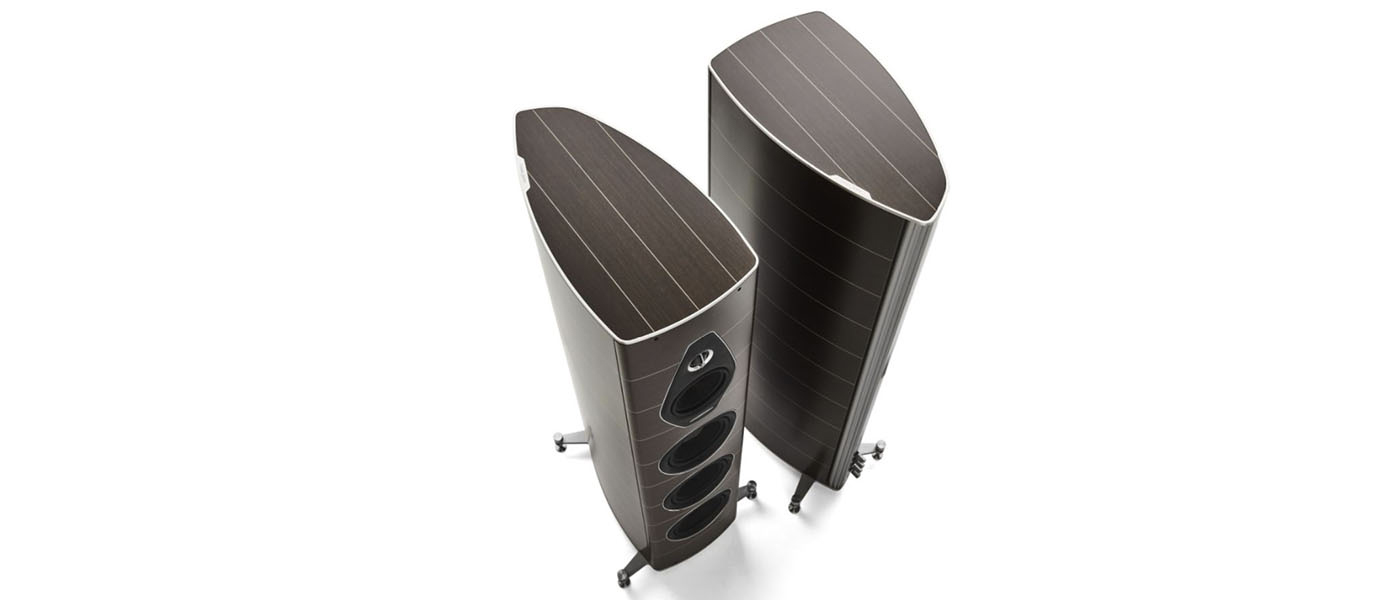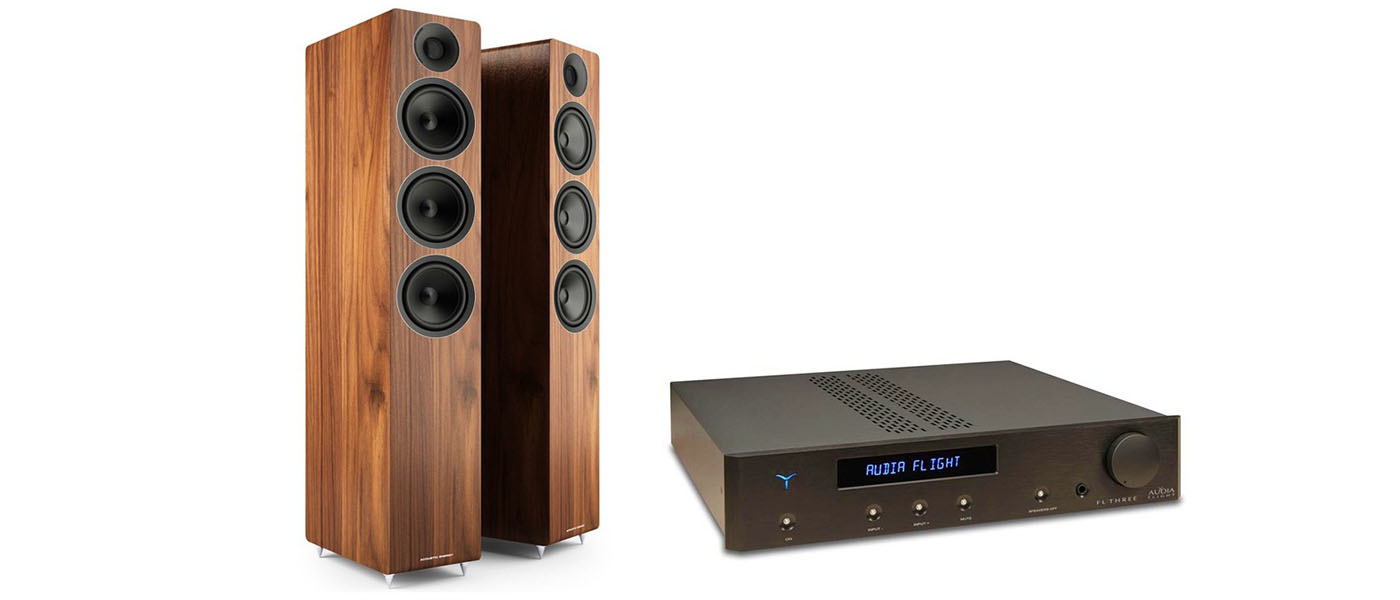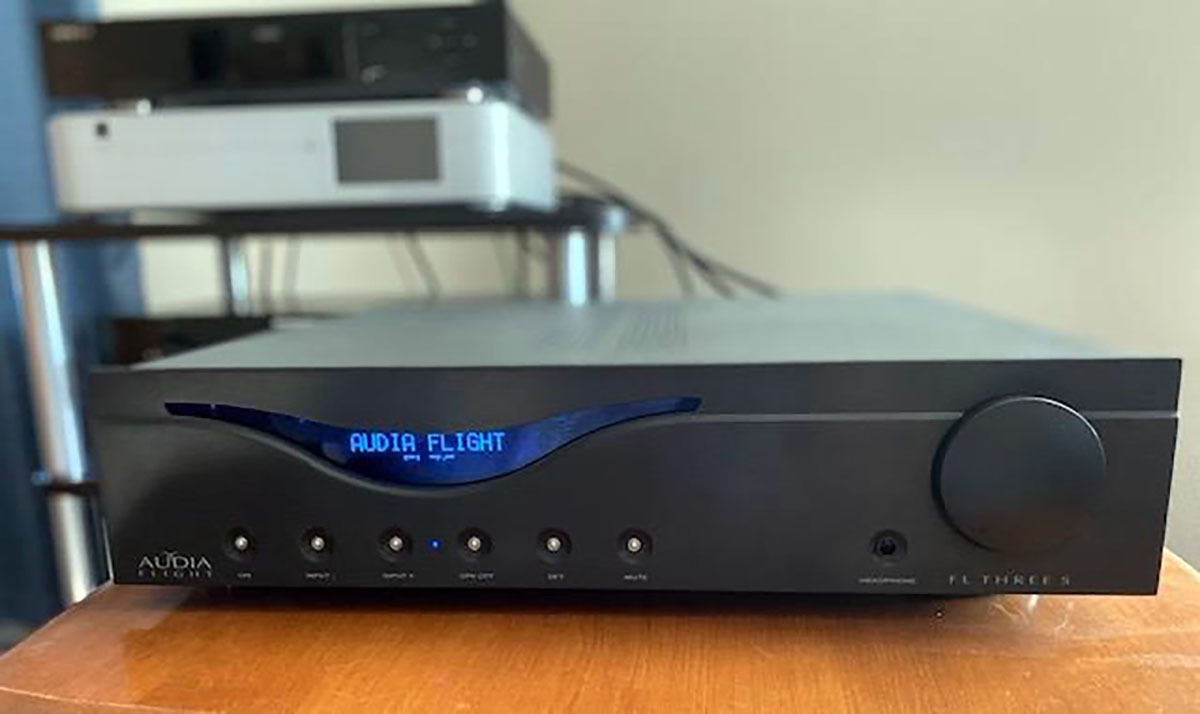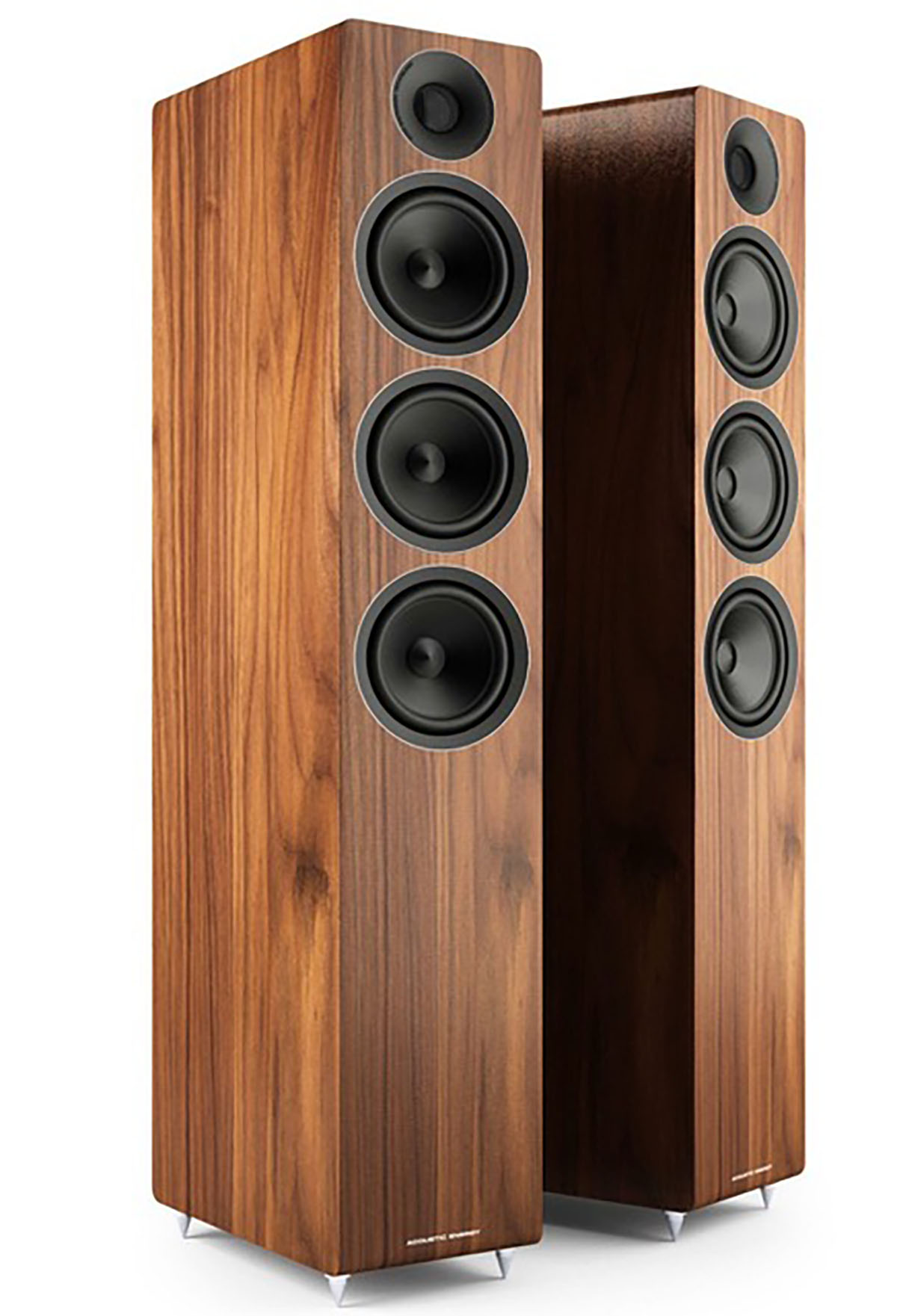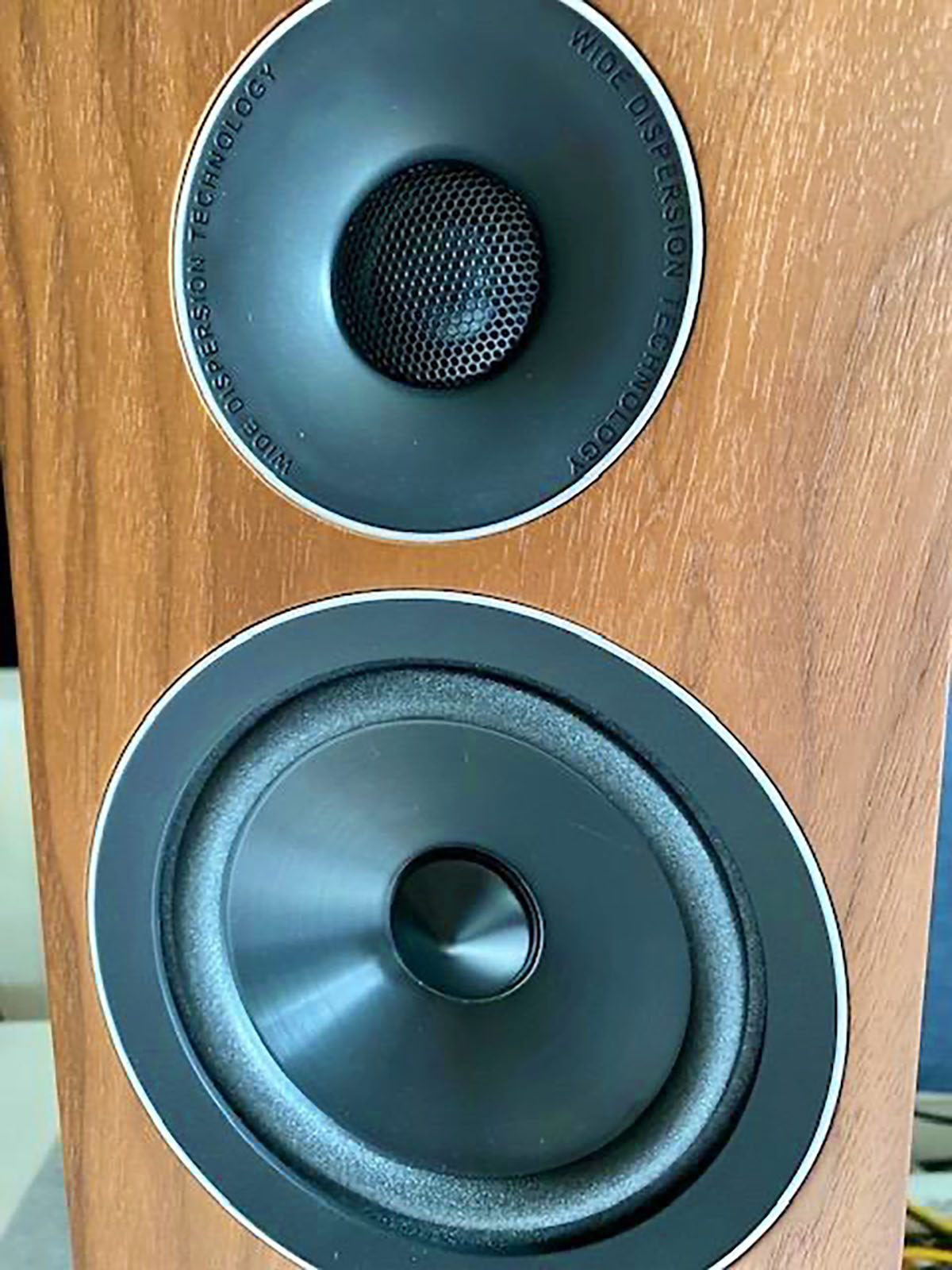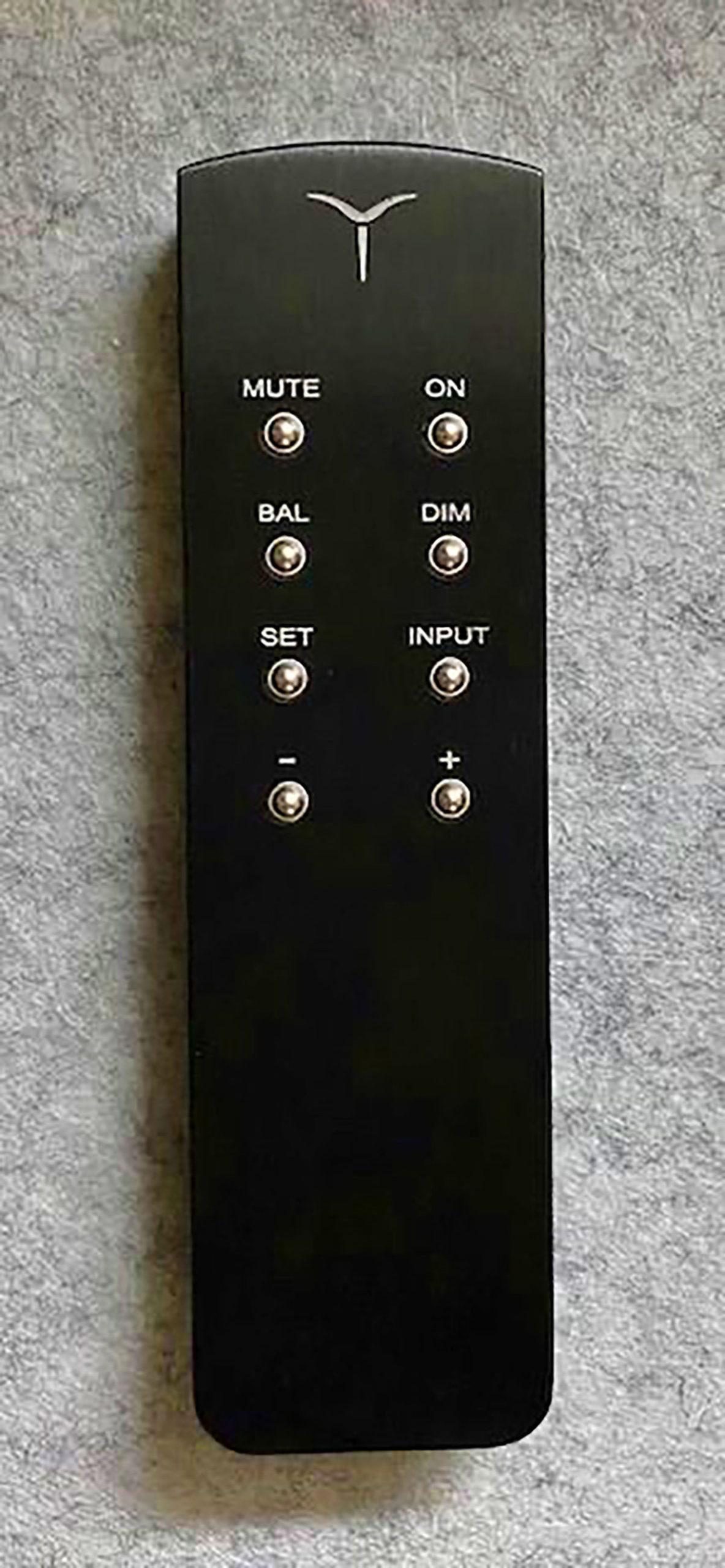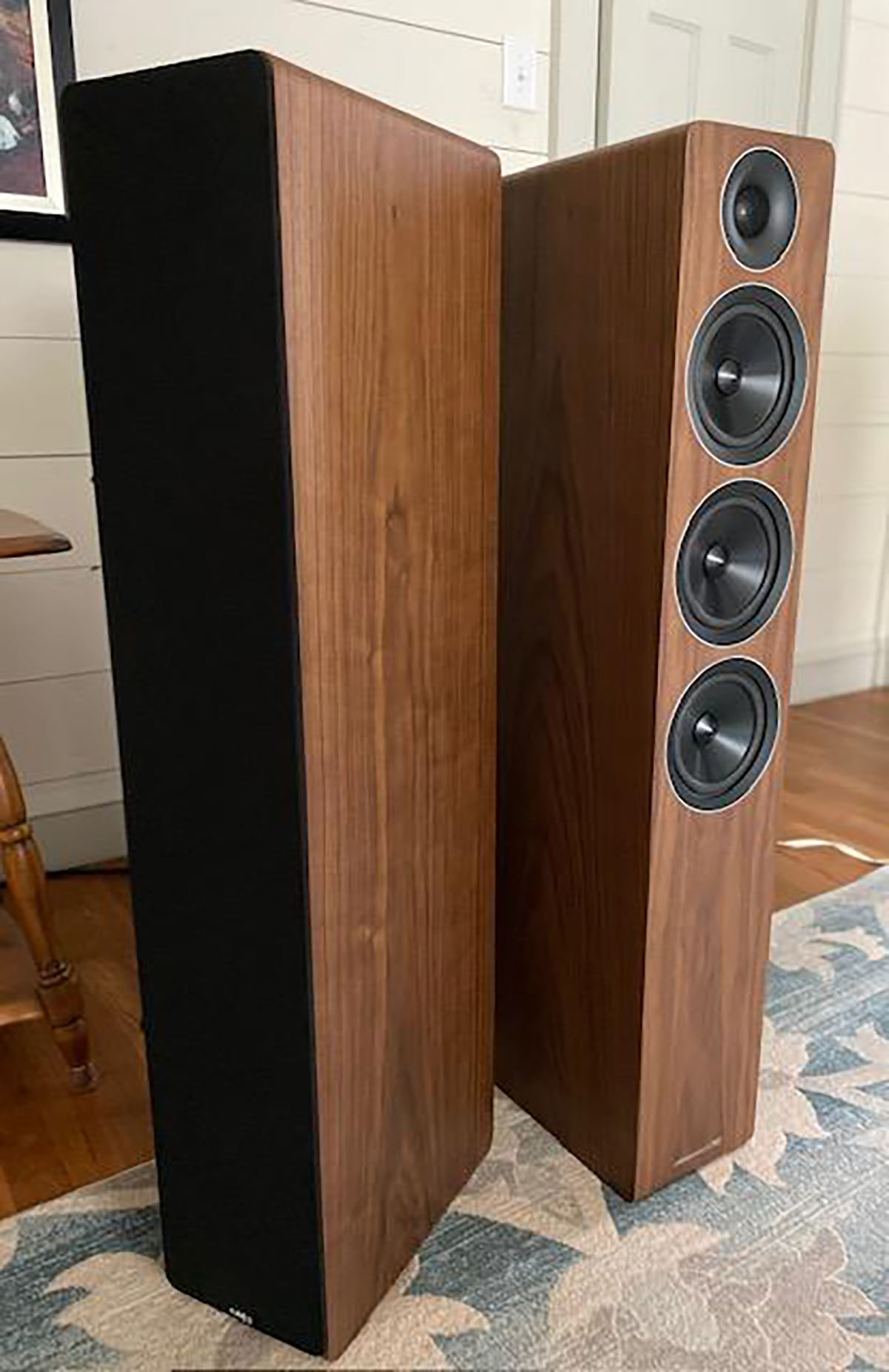Audia Flight Three S Integrated Amplifier and Acoustic Energy 320 Speaker Highlights
Audia Flight Three S Two-channel Integrated Amplifier
- Two 100-watt amps in a dual mono design.
- Large blue OLED display.
- Four high-current power supplies for the output stage.
- 10mm aluminum face plate with an ALPS Blue potentiometer volume control.
AE 320 Floor-standing Speakers
- Ceramic hard-anodized aluminum sandwich cone woofers.
- Shallow profile and ultra-high force, long throw motor system.
- 28mm aluminum dome tweeter with Wide Dispersion Technology waveguide.
- Slot-shaped port (tuned at 42Hz) in the rear for reduced turbulence noise.
Audia Flight has been around since 1996 and produces some exceptionally fine hand-crafted audio gear made in Civitavecchia, Italy, near the Mediterranean Sea. Their newer approach to circuit design allows for better load control and higher response speeds that produce a more accurate signal than traditional designs. Their ultimate goal is to find a way to prevent alteration of the incoming signal by designing a circuit around the lesser-known current-feedback approach. Audia Flight currently manufactures preamps, integrated amps, and amplifiers. The Flight Three S integrated amp I am reviewing has no digital inputs or outputs but is strictly analog in design. A DAC module and phono input can be installed at an additional cost if you want those upgrades.
Acoustic Energy has been around since the 1980s. They are a small company out of the UK that designs and tunes their speakers by ear. They have speakers from the entry-level 100 series, the 300 series, and the higher-end 500 series. The company is more focused on the two-channel experience but makes center-channel speakers and subwoofers as well. They are known for not changing speaker models every other year, but when they design and manufacture a product, it stays in production for a long time. If you design it right the first time, why tinker?
So obviously, my challenge is great. How do you rate an integrated amp and a speaker you have never auditioned before? Which one contributes to the overall audio experience? My other challenge with the Flight Three S was overcoming the strictly analog design. I never realized how entrenched I am in the digital domain until I set up the integrated amp with my other equipment. Ultimately, I ran my PS Audio DSD Perfectwave DSD DAC (and streamer) into the Audia Flight and streamed most of my music via Qobuz and some shiny discs from my Oppo UDP 203. In the end, I did some mix-and-match with my Marantz receiver, the AE 320s, and my Sonus faber Sonetto Vs with the Audia Flight. It at least provided a frame of reference for me to go on for the review.
Output power @ 8/4 ohm:
100/160 Watts RMS
Amplifier stage gain:
26dB
Frequency response @1 Watt RMS; -3db):
1Hz – 450kHz
Slew Rate @ 8 Ohms:
>80V/µS
THD:
<0.05%
S/N ratio:
>95dB
Unbalanced input impedance:
51 kOhms, 150pF
Balanced input impedance:
30 kOhms
Maximum power consumption:
400 Watts
Dimensions (W x H x D):
15.74 x 4.33 x 16.93 inches
Weight:
36.3 lbs.
Audio Flight 3 S Integrated Amplifier Price:
$3,999 as reviewed, $4,548 w/DAC, $5,047 w/DAC & phono boards.
Company:
Design:
3-way
Drive Unit:
(3) 5.11″ Ceramic Aluminum Sandwich Cone
Tweeter:
1.1″ Alloy Dome
Frequency Range:
35Hz to 30kHz
Sensitivity:
90dB
Peak SPL:
116dB
Power Handling:
200 watts
Crossover Frequency:
380Hz / 3.4kHz
Impedance:
8 ohms
Dimensions:
39.4″ (1000mm) H x 6.9″ (175mm) W x 12.6″ (320mm) D
Weight:
57.3 lbs. (26 Kg) each
Finishes:
Piano Black and Real Walnut Veneer
Acoustic Energy AE 320 Floor-standing Speaker Price:
$2,899/pair (black or white), $2,999/pair walnut
Company:
SECRETS Tags:
amplifier reviews, speakers reviews, reviews 2023, amplifier reviews 2023, amplifier reviews 2023, Audia Reviews 2023
The Audia Flight Three S is a dual-mono stereo integrated amp and though the design is geared for simplicity, it is also designed for the audiophile. Starting with a spartan, yet elegant exterior, the Flight Three S is solidly built with a stylishly crafted aluminum faceplate that is 10mm thick with a curved OLED screen. The pushbutton selectors have a positive tactile feel, and a weighted aluminum knob controls the volume. The design and build quality are exemplary. The unit weighed more than I was expecting, which tells me the toroidal transformer inside must be beefy. The blue OLED screen can be seen from across the room and provides volume and input information.
Secrets Sponsor
The inputs can be renamed (up to eight characters) and a solid billet aluminum remote is included with small metallic buttons that are not backlit. It is more functional than fancy. Of course, it does not need to be as it really only switches inputs and controls the volume.
There are eight power supplies that provide 13.2 µF of total capacitance available to the stabilized power supplies up until the driver transistor section. Then, four high-current power supplies (72µF) are then dedicated solely to the output driver stages. Driving the speakers are two 100-watt amps with a large 576VA toroidal audio transformer. The logic control section features its own toroidal transformer and is connected to the analog section via photo-couplers.
The back end has four unbalanced analog inputs (one optionally phono), one balanced analog input, and the option of USB digital input. In bypass (direct mode) the Audia Flight Three S can be used as a stand-alone amplifier or as the main L/R in a home theater situation. A discrete headphone amp section is also included for private listening sessions. Rounding out the I/O is a remote trigger input, monitor input, record output, and an unbalanced preamplifier output which allows you to turn off the internal amps. All Audia Flight products come in silver or black.
The Acoustic Energy AE 320 Floor-standing Speakers are a decidedly compact, lean speaker system that has rounded corners reminiscent of Q Audio loudspeakers. They are some of the slimmest speakers I have auditioned, and some may find that appealing. They come with floor spikes, but due to their slim nature, I thought they could have benefited from outrigger feet. They are heavy, so keep that in mind if you have small children or a rambunctious dog. The AE320 is a true, three-way floor-standing loudspeaker that is suitable for medium to large-sized rooms.
It uses three 130mm (5”) drivers, one midrange, and two bass units. The tweeter is a 28mm (1”) aluminum dome type with a Wide Dispersion Technology Waveguide to help it blend with the midrange. The drivers use a newly designed ceramic aluminum sandwich cone with an ultra-shallow profile and high force, long throw motor system. This new driver boasts improved dispersion, extended bass slam, and overall power handling. The cabinet (mine came in walnut veneer) is made from 18mm-thick MDF with a slotted port in the back.
The speakers look great with the magnetic grills on or without them. The base of the cabinet is pre-loaded with an inert mass material which adds damping and reduces cabinet resonance. This may be why they feel heavier than their diminutive size might lead you to believe. Added to the 8mm floor spikes, this helps stability and provides a solid footing for the drivers to operate without vibrations from the cabinet interacting with the floor. The choices for cabinet finishes are gloss white, gloss black, or real walnut veneer.
Secrets Sponsor
I set the speakers up about seven-and-a-half feet apart and two feet off the back wall. I toed them in, so they crossed about one foot behind my head. This gave me the best tonal balance and imaging. I plugged my PS Audio DSD DAC/streamer into analog input 2 and an Oppo UDP-203 into analog input 3. Renaming these inputs took a bit of trial and error as I had to use a combination of button presses to get things to work. I’ve had painful experiences with these devices in the past, and though they can be frustrating, you usually only need to perform this task once and not worry about it again. Just remember to hit “set” when you want a change to take hold.
The remote is basic and when you change inputs, the Flight Three S makes a clicking sound. I felt that the volume control was not granular enough and sometimes I had to get up and adjust the volume knob to get my preferred sound level. A small Phillips screwdriver is included with the remote for opening the back when you change the lithium battery. That was a nice detail! Otherwise, everything else on the back is well labeled and you can see a few module slots for the upgrade process for a DAC or phono input. The Audia Flight Three S has no room correction feature and there is no video output to your TV, so it doesn’t take long to set it up and get it going. It worked flawlessly during my review period. Together, I found the AE 320s and Audia Flight made a great match, but the Audia worked well with my Sonus fabers too. There is plenty of juice in the amp to power all but the most inefficient speakers.

James Taylor “Hourglass”
James Taylor’s Gaia from his Hourglass album was a good test for male vocals, but also some fine acoustical guitar work and startling deep percussion about 2/3 into the song. I was surprised by the tight deep bass the AE 320s produced. They came close to my Sonus fabers in range and the AE 320s are about 1/3 their size. Taylor’s voice had the natural fullness and effortless sound I was expecting. The treble was a bit harsh earlier in my audition, but over a few days, it seemed to tone down a bit. The detail was good, but the sound staging seemed narrower than I expected from a slim-line speaker. Though rated for medium to large rooms, I felt the AE 320s would fill a medium room with ample sound, but if I had a very large room, I would probably move up to the next larger AE model. On the plus side, you could get by without a subwoofer with the 320s for about 95% of your music listening, the bass was that articulate.
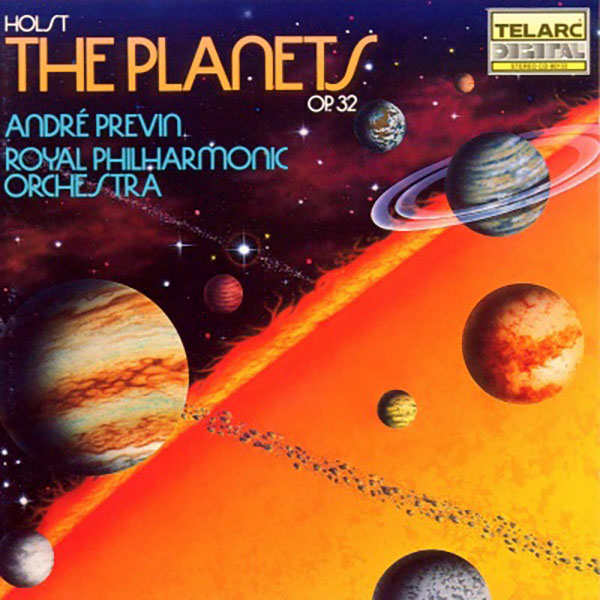
Gustav Holst “The Planets”
A great orchestra work that has brass fanfares and quiet reflective string passages in Gustav Holst’s The Planets. From blaring war trumpets in Mars to the skittery strings and celesta in Mercury, all the details came shining through. I could not detect any timbre issues while listening to the various instruments in this wonderful recording.

Anthony Newman “Organ Orgy”
Organ Orgy is as it states: “A Wagner Sound Spectacular”. The cathedral of St. John the Devine in New York City has an amazing Aeolian-Skinner organ that once included State Trumpets, way up high and behind the listeners. These pipes were under high pressure and had a very distinctive piercing quality that works wonders with Wagner’s operatic works. (I say were because the organ was damaged in a fire and has yet to be fully restored to its former glory) and turning it up and closing my eyes, I can almost feel I am in the cathedral, where it takes several seconds for the reverb to decay. This was a pivotal album by keyboardist/conductor Anthony Newman from my college days and is still exciting to listen to after all these years. Usually, a sub can fill in any deficient bass foundation but the AE 320s held up very well on their own.
The Audia Flight Three S Integrated Amplifier and Acoustic Energy 320 Floor-standing Speakers are a powerfully musical pair that should satisfy any discriminating stereophile.
- Purity and richness of sound.
- Slim design of the AE 320 towers.
- Strong, clean bass reproduction.
- Modular upgrade path for the Audia Flight Three S.
- Better granular volume control from remote.
- Outrigger feet for the AE 320.
I have not seen too many reviews in the US for either the Audia Flight Three S Integrated Amplifier or the Acoustic Energy AE 320 Floor-standing Speakers. This should change over time as word gets out. I found the Audia Flight Three S to be the nearest thing to a tube preamp but without tubes. The sound was smooth and finely detailed. I liked the size and sound from the slim AE 320 towers. I am curious to hear the 500 series speakers as I am sure they build upon the exceptional 300 series sound. Competition is tough, but there is always room for more well-designed audio products on this side of the pond.


